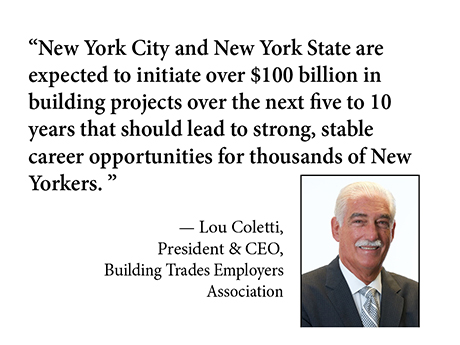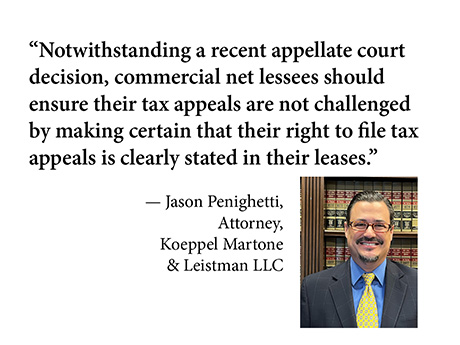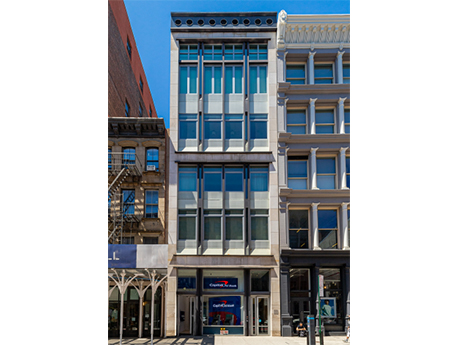By Taylor Williams The New York City retail market is currently functioning like an episode of The Price Is Right. Developers, investors, brokers and operators are all trying to attach fair values to rents and sales prices for spaces of all sizes and submarkets. But after a tumultuous period marked by a global pandemic and record inflation, followed by a string of severe interest rate hikes, accurately assigning those numbers is easier said than done — at least in some submarkets. According to data from JLL, at the end of the third quarter, the average rent throughout New York City was $290 per square foot, down 5.3 percent year over year. That figure represents an improvement from the second quarter of 2022, when rents posted a 12 percent decline on a year-over-year basis. In addition, JLL’s data shows that 58 new leases were signed in the third quarter. While that figure marks a decline of 13 percent from the second quarter, it also constitutes an increase of 7.4 percent on a year-over-year basis. These numbers suggest that after retail leasing and sales completely stagnated in 2020 due to an unprecedented public health crisis, the market corrected sharply in 2021 and …
New York
By Lou Coletti, president & CEO, Building Trades Employers Association In the 1930s, the United States was in the throes of the Great Depression. Millions of people lost their jobs, and savings were obliterated overnight. President Franklin Delano Roosevelt seized the opportunity to bring the country back from the brink of economic collapse, creating the Works Progress Administration to put 8.5 million Americans to work building new schools, roads, bridges and water systems. In 2020, the country faced a similar shock to the system as COVID-19 locked down our cities, shuttered businesses and sent entire populations into isolation for months on end, only to contend with a maze of rules and restrictions as the economy reopened. Almost three years later, major metropolises like New York City have an unprecedented opportunity to rebuild both the physical infrastructure and social fabric of their respective regions. Much like in the days of the Great Depression, the construction industry has a key role to play in rebuilding our physical and social infrastructure. This time, however, it’s imperative that we prioritize equity, not only within individual projects but also within the industry at large. The combination of economic upheaval caused by COVID-19 and the …
By Jason Penighetti, attorney, Koeppel Martone & Leistman LLC In a far-reaching decision, New York’s highest court has affirmed the rights of tenants under a commercial net lease to protest assessments and reduce their real property tax burden. The ruling reversed a State Supreme Court dismissal of a petition on the grounds that only a property’s owner can file an administrative grievance with the Board of Assessment Review. In a net lease, the tenant is responsible for paying real estate taxes and other expenses stated in the lease. In the matter of DCH Auto vs. Town of Mamaroneck, the Court of Appeals in June 2022 published a unanimous decision stating that tenants contractually obligated to pay real estate taxes and authorized to protest assessments may file tax appeals even when they do not hold title to the underlying real estate. Restoring a Precedent DCH Auto operated a car dealership in a net leased property in Mamaroneck, New York. Its lease with the owner required DCH to pay the property’s real estate taxes in addition to rent. Commercial tenants with this type of lease commonly file tax appeals to correct excessive tax bills and mitigate operating costs. These occupiers include retailers …
By Brent Glodowski, director, capital markets group, Avison Young Conditions are looking up for retail real estate investment in New York City. In one sense, “up” is the only way to go for a sector that has been bumping along the bottom of a trough. But with inflation tempering investors’ recent fascination with multifamily and industrial properties, retail also offers opportunities to acquire price-corrected assets when those other property types hover near cyclical peaks. Retail’s Head Start New York’s retail real estate market was already suffering from changing consumer tendencies when COVID-19 arrived and thrust many retailers and their landlords into a full-blown crisis. Even when government-ordered shutdowns eased, remote work policies drained office buildings of the customer bases that had supported swaths of restaurants, shops and entertainment businesses. Home-bound workers became a redistributed daytime population, shifting demand for meal delivery and other retail to new areas. Hundreds of small businesses went under, leaving vacant storefronts in their wake. Some retailers altered business plans to serve shifting customer bases that had developed new, pandemic-influenced consumption practices. Landlords with vacancies to fill turned to traditional strategies, such as relocating tenants from out-of-the-way spaces to fill their most visible storefronts. Property owners …
By Joe Aquino, president, JAACRES When Barneys New York department store closed in 2020, we saw a dramatic relocation of luxury retail on Madison Avenue to the south, apparently with a common goal of establishing better proximity to East 57th Street. Prior to that event, many luxury brands enjoyed a shop within a shop at Barneys, plus another store on the corridor, usually further uptown. Prior to the COVID-19 pandemic, this stretch of Madison Avenue was so tight for space that we saw East 59th Street, a major side street, securing tenants like Dior, Bathing Ape and Balmain. During the pandemic’s lockdown phases, retail vacancy rose dramatically, even in the most desirable areas. Now, post-pandemic, we see spaces along Madison Avenue getting filled by new and established luxury retailers ready to make a statement. Here are some of the key transactions that have either been recently completed or are in progress: Givenchy just left its cozy quarters at 749 Madison Ave. at the southeast corner of 65th Street to take the southeast corner at 625 Madison Ave. Versace will open in Givenchy’s place this fall. Wolford, a maker of luxury seamless tights, took the Lalique store at 607 Madison Ave. …
By Taylor Williams The fervent desire that many Americans have to make up for lost eating, drinking and socializing time has New York City’s food and beverage (F&B) market roaring back to life, prompting tenants to revisit growth plans, landlords to aggressively market their spaces and the brokers who represent the two sides to sharpen their pencils. In mid-August, New York City Mayor Bill de Blasio announced that residents wishing to eat or drink inside a restaurant or bar would have to show proof of receipt of at least one dose of a COVID-19 vaccine. Yet after two months of seeing this policy enforced, local brokers say the mandate has had a minimally adverse impact on business. Consequently, leasing activity, which began rebounding a year ago, is now accelerating in the F&B space. According to data from CBRE, F&B deals accounted for 30 percent of all new retail leases executed in New York City between March 2020 and August 2021. The company’s research team also identified 65 F&B leases throughout New York City in 2021 alone, representing about 33 percent of the total deal volume. Specifically within Manhattan, there were 24 leases executed for F&B concepts in the third quarter …
By Taylor Williams For lenders and investors in New York City’s affordable housing market, accurately underwriting rent growth, operating costs and long-term asset appreciation can be a tricky proposition in today’s economic environment. To be fair, buyers and financiers of affordable housing properties in many U.S. markets are being forced to adjust and recalculate their metrics due to forces they can’t control. Yet macroeconomic factors like rising inflation, which puts heavy pressure on construction and operating costs, can often seem more acute in the Big Apple, where the cost of living and doing business is already higher than virtually anywhere else in the country. Economic Drivers The labor and materials costs for the renovations and rehabilitations that many affordable housing communities need are rising. According to Producer Price Index data supplied by the U.S. Bureau of Labor Statistics, for the month of August, the latest report available at the time of this writing, the aggregate cost of construction materials had risen by 19 percent from August 2019. Much of this rise in materials costs is due to disruption of the global supply chain via COVID-19, causing developers of much-needed housing stock to incur heftier budgets and longer construction timelines on …
By Mark Fogel, founder, ACRES Capital Despite the pandemic-related uncertainty that dominated the markets in 2020, the student housing sector consistently displayed strong pre-lease occupancy rates among properties under construction, suggesting that the asset class would be well-positioned to hit the ground running in 2021. According to RealPage Analytics, students, encouraged by the prospect of fully reopened campuses, fueled a nearly 10 percent nationwide increase in pre-lease occupancy at off-campus housing between March and April of this year. This data in particular seems to support improvement for the student housing sector overall. Research organization RealPage has tracked student housing occupancy rates at 175 major universities across the country, a sort of barometer for the larger industry. As of March, the company’s data showed that 59.6 percent of beds at those universities were preleased for the fall 2021 semester. While that figure is still 200 basis points below the March 2020 level, it seemingly speaks to students’ preference to get back to living on campus. And while this is good news for operators and developers, the resiliency of the student housing market is bringing forth an unintended, but positive effect on one of the hardest-hit rental markets in the country: New …
By Joel Marcus, partner, Marcus & Pollack LLP What happens when an irresistible force meets an immovable object? The longstanding physics conundrum encapsulates the situation in which New York City property owners currently find themselves, and for better or worse, they’re about to discover the answer to the age-old question. City government has squeezed increasing sums of property taxes from its real estate stock in each of the past 25 years, but the pandemic is changing everything. The basic fact is that 53 percent of New York City revenues come from real estate taxes. Fueled by rising rents that are tied to high costs of new construction, the city property tax base has grown and enjoyed record tax revenues in recent years. Total real property tax revenue was almost $30 billion in 2020, according to the city’s annual property tax report. Historically speaking, no major event in recent memory has been responsible for a pause in the year-over-year tax increases — not the Financial Crisis of 2018, nor Hurricane Sandy, nor even the events of September 11. It seems as though only a global pandemic has this particular power. COVID-19 has affected every element of New York City’s economy, but …
By Lev Mavashev, founder and principal, Alpha Realty Last year in 2020 and even now well into 2021, the COVID-19 pandemic has many New York City property owners feeling like deer in headlights. Should I push forward? Take a step back? Or should I just freeze and brace for impact from the worst disaster to strike the world in living memory? While little is certain in these uncertain times, for New York’s multifamily owners considering their future beyond 2021, values might drastically be impacted by the following factors. Rising Property Taxes New York will never move forward unless its real estate industry moves forward. Next to finance and, increasingly, big tech, the industry is the biggest driver of the state economy, and its 12-month enforced hiatus has cost the state $1.6 billion in lost tax revenue. The state can’t just print money to make up that shortfall, so it is doing one of the only things that is certain in life: issuing taxes. From hikes in property taxes to capital gains, personal income to corporate tax, both the city and state are creating a clear roadmap to recouping what’s been lost. Property taxes will definitely be going up for the …
Newer Posts











